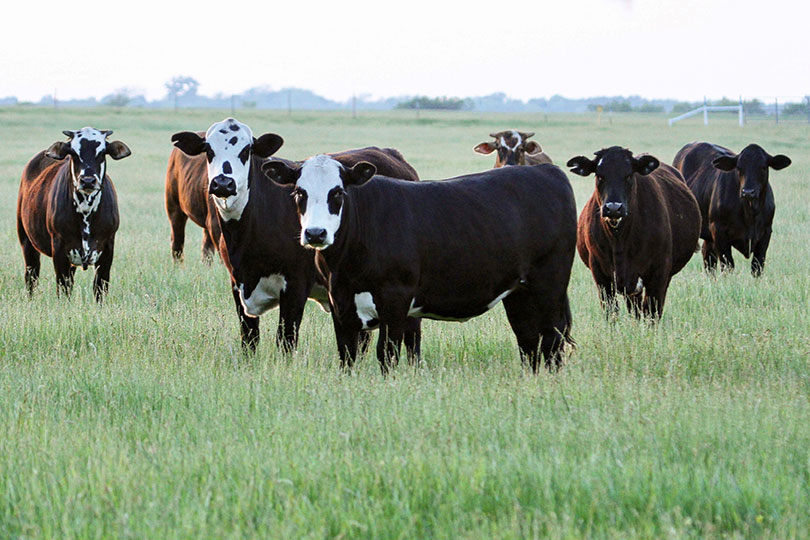By Julie Tomascik
Editor
The latest cattle inventory report released by the U.S. Department of Agriculture (USDA) shows the nation’s cattle herd is still shrinking.
All cattle and calves in the U.S. on July 1 totaled 94.2 million head, 1% below the 95.4 million head reported in July 2023. The cattle inventory report was compared to 2023 since last July’s report was cut.
“While the July inventory report does not include state breakdowns, the report does reflect what we’re seeing across the Lone Star State, which is some producers are thinking about and starting to retain heifers, while others are capitalizing on the record-high calf prices,” Tracy Tomascik, Texas Farm Bureau associate director of Commodity and Regulatory Affairs, said.
It’s the smallest beef cow herd on record and the lowest mid-year cattle inventory report since 2014, when herd rebuilding started following the drought in 2012.
All cows and heifers that have calved are estimated at 38.1 million head, down 1% from 2023.
Beef cows, at 28.7 million head, are down 1% from two years ago.
Milk cows, at 9.45 million head, are up 1% from 2023.
The inventory of beef replacement heifers over 500 pounds was estimated at 3.7 million head, down 3% from 2023, while other heifers were estimated down 3% at 7.4 million head.
“This an indicator that contraction in the U.S. beef herd is continuing,” Tomascik said. “It’s unfortunate that we don’t have last year’s report to compare to because the mid-year snapshot of the cattle herd offers critical data on herd dynamics.”
Calf crop forecast dips
The 2025 calf crop is expected to be 33.1 million head, down 1% from last year.
Calves born during the first half of 2025 are estimated at 24.3 million head, down 1% from the first half of 2024. An additional 8.8 million calves are expected to be born during the second half of 2025.
This drop aligns with lower cow inventory levels and a tighter supply outlook. Beef cow slaughter in the first half of 2024 is down 13% from the same time last year, while heifer slaughter is down 4%. That, combined with steady-to-slightly-increased cow and heifer retention, suggests the U.S. is likely in the early stages of herd rebuilding.
Replacement numbers reflect long road ahead
All heifers 500 pounds and over as of July 1 totaled 14.6 million head, 2% below the 14.9 million head in 2023. Beef replacement heifers, at 3.7 million head, are down 3% from two years ago.
Milk replacement heifers, at 3.5 million head, are unchanged from 2023. Other heifers, at 7.4 million head, are 3% below two years ago.
Although beef replacement heifer numbers are down, the decline in heifer slaughter could be a sign that producers are beginning to rebuild. However, herd expansion tends to be gradual, often taking multiple years, and requires a consistent, longer-term reduction in beef production before cattle supplies grow significantly.
Other classes of cattle
Bulls weighing 500 pounds and over were unchanged from two years earlier. They totaled 1.9 million head on July 1.
Steers weighing 500 pounds and over totaled 13.8 million head, a 1% drop from two years ago.
Cattle on feed
Cattle and calves on feed for the slaughter market in the U.S. for all feedlots totaled 13 million head on July 1, down 1% from two years earlier.
Cattle on feed in feedlots with capacity of 1,000 or more head accounted for 85.6% of the total cattle on feed on July 1, down slightly from two years ago.
The total of calves under 500 pounds and other heifers and steers over 500 pounds (outside of feedlots), at 34.0 million head, is down 2% from the 34.7 million head two years ago.
Cattle prices and placements
Economists and livestock analysts forecast high cattle prices will continue.
The latest USDA Cattle on Feed report showed a decline in placements in southern states, specifically in Texas.
The state-by-state breakdown has Texas placements down 18% compared to last year and Oklahoma down 27%.
Part of that can be attributed to southern border being closed to live cattle imports.
The U.S. imports about 1.2 million head of cattle from Mexico every year, representing about 4-5% of all cattle marketed for U.S. beef production.
Closing the border to Mexican cattle imports further restricts already tight beef cattle supplies, but it is a method to help keep the New World screwworm from entering the U.S.
About the survey
Over 17,900 operators across the nation were surveyed during the first half of July.
Surveyed producers were asked to report their cattle inventories as of July 1, 2025, and calf crop for the entire year of 2025 by internet, mail or telephone.
USDA will release its next inventory report in January.


Leave A Comment